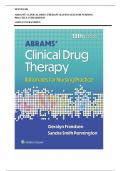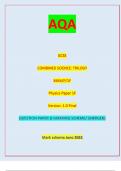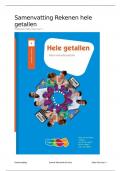Exam (elaborations)
Test Bank For Abrams' Clinical Drug Therapy: Rationales for Nursing Practice 13th Edition by Geralyn Frandsen, SANDRA PENNINGTON||All Chapters||ISBN NO:10,1975222326||ISBN NO:13,978-1975222321||Complete Guide A+
- Course
- Institution
- Book
Test Bank For Abrams' Clinical Drug Therapy: Rationales for Nursing Practice 13th Edition by Geralyn Frandsen, SANDRA PENNINGTON||All Chapters||ISBN NO:10,1975222326||ISBN NO:13,978-1975222321||Complete Guide A+
[Show more]





